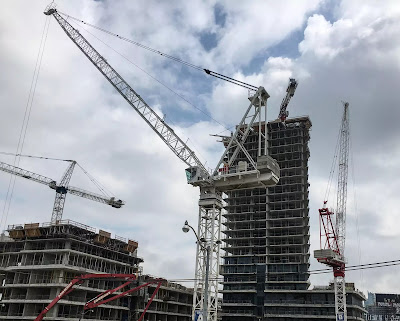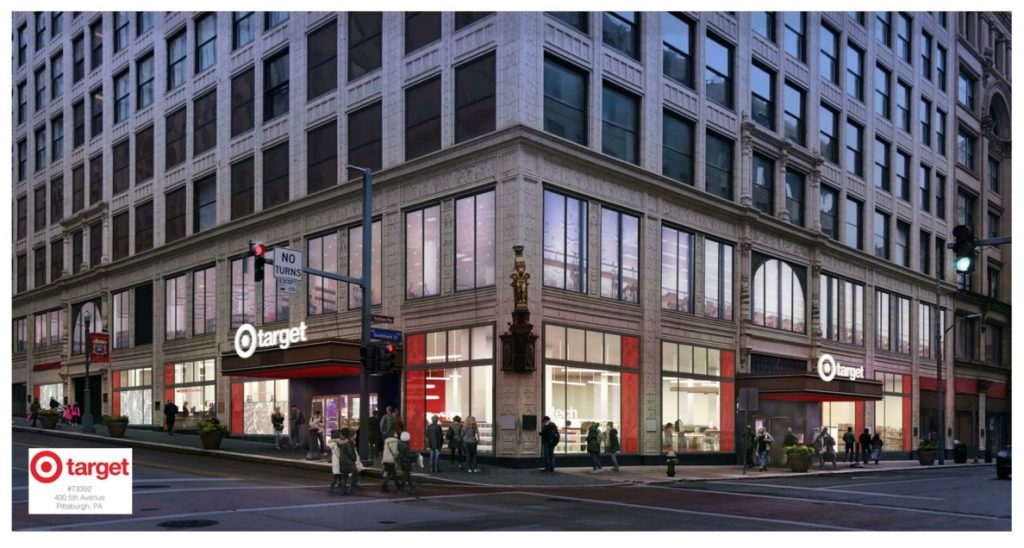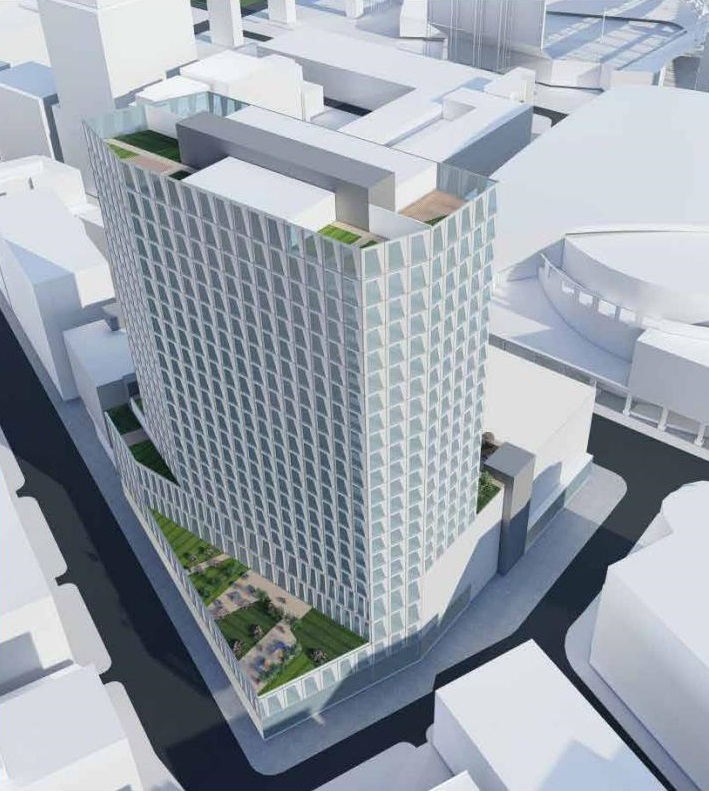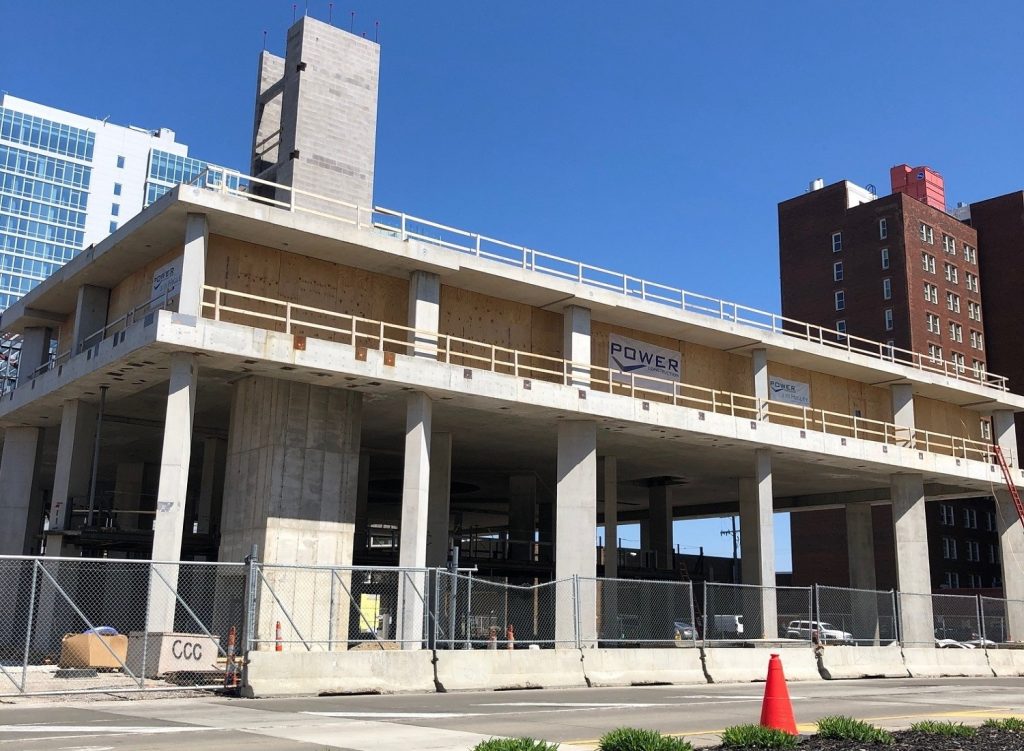ARTICLE UPDATED DEC. 9, 2020: Ohio Senate voted 28-2 to concur with the Ohio House of Representatives’ changes to Sub. SB39, the Transformational Mixed-Use Developments tax credit. The bill has been forwarded to Gov. Mike DeWine for his signature to become law.
Today, the Ohio House of Representatives passed legislation for creating a real estate megaprojects tax credit. Substitute House Bill 39 would create $100 million in tax credits per year over four years that encourage insurance companies to invest in Transformational Mixed-Use Developments, or TMUDs.
Members of the Ohio House passed Sub. SB39 by a vote of 84-1. It followed the passage of a similar bill by the Ohio Senate earlier in the 133rd General Assembly’s two-year session. The Senate voted 32-1 in July 2019 to support the bill as introduced by State Senator Kirk Schuring (R-29, Canton).
Schuring informed House leaders that he would support a clean version of the House-passed version of his bill. However the bill was amended at the last minute per the request of Rep. Tom Brinkman Jr. (R-27, Mt. Lookout) to restore a tax credit for political campaign contributions. Rep. Mike Skindell (D-13, Lakewood) said the amendment is unrelated to the bill’s original purpose and which would restore a tax credit that the Ohio Senate had ended. That means the bill will return to the Senate for a concurrence vote.
If the Senate passes the amended legislation and even if the governor doesn’t sign the bill within 10 days, the bill automatically becomes law. He could also veto it, however unlikely.
The TMUD tax credit is the brainchild of Stark Enterprises and its law firm Thompson Hine LLP that drafted the first version of the legislation three years ago. Stark sought the tax credit to fill a gap in its capital funding for the mixed-use nuCLEus development on East 4th Street, between Huron Road and Prospect Avenue in downtown Cleveland.
But Stark’s reward is still a long ways from being of direct benefit to the firm and its development plans that hatched the TMUD tax credit. It could instead be a reward for dozens of known and potential TMUDs throughout the state, including up to 30 projects just in Greater Cleveland with which Stark’s project will have to compete.
To qualify for a credit, an urban TMUD project must be within 10 miles of a major city that has a population larger than 100,000 people. The project must be valued at $50 million or more, include a building at least 15 stories high or include 350,000 square feet of space in some combination of office, residential, hotel, retail, structured parking or recreational use.
| Stark Enterprises sought the TMUD tax credit to close the equity gap on its planned nuCLEus development. But it will allow many other megaprojects in Cleveland and elsewhere to become a reality (Stark). |
Up to $100 million in TMUD tax credits may be awarded per year over four years. The duration is from the start of state fiscal year 2020 that began on July 1, 2019 and ending at the close of state fiscal 2023 on June 30 of that calendar year. By issuing a TMUD tax credit, the Ohio Tax Credit Authority would refund to insurance companies as much as 10 percent of their investment in a TMUD. The credit would be capped at $40 million per project. Most projects would receive far less.
Up to $80 million will be available to urban projects statewide. Another $20 million will be available to projects with buildings only four stories in height and a total size of 75,000 square feet in smaller towns and rural areas that are 10 miles or more from a major city.
Sub. SB39 was passed out of a House committee on Nov. 18.
“This bill has received strong bipartisan support,” Rep. Paul Zeltwanger (R-54, Mason), chair of the House’s Economic & Workforce Development Committee (E&WD). “The goal is to kick-start our economic recovery. There are guardrails on this to ensure that the benefits will meet or exceed its costs.”
“The bill is a great way to drive economic development in our districts,” said Rep. Terrence Upchurch (D-10, Cleveland). He also is a member of E&WD Committee.
Skindell, another member of the E&WD Committee, was the lone floor vote against the bill.
“SB 39 reduces (tax) revenues from large insurance companies by up to 17 percent annually at a time we are not properly funding food banks, meal delivery for seniors, local governments, primary and secondary education and needs-based assistance for higher education,” Skindell said.
Steve Coven, Stark Enterprise’s vice president of real estate development, said tax credits similar to Sub. SB39’s have already helped advance the redevelopment of historic buildings which has led to a visible revival in Cleveland’s central business district. But the supply of obsolete commercial buildings available for conversion to residential or mixed uses is running low.
Since 1995, 31 residential developments in downtown Cleveland 10 stories or taller were completed and only five of those involved new construction — Crittenden Court Apartments, Pinnacle Condominiums, The Avenue District Apartments, The Beacon apartments and The Lumen apartments.
And, since 2006, seven 20+ story residential developments opened in downtown Cleveland. Only two of those involved new construction — The Beacon and Lumen. All of the others were the result of rehabilitating historic commercial buildings, the remaining supply of which is becoming constrained and/or involving much more expensive renovation projects like The Centennial at 925 Euclid Ave.
“This (historic tax credit) program has encouraged our urban areas to preserve their historic buildings, which is what gave our cities their character, and now we need to complement that character with a program that will allow our cities to set the stage for their futures,? Coven added.
“There seems to be so many projects in Cleveland that are so close to the finish line financially,” said Zak Baris, president of Comprehensive Zoning Services, a real estate due-diligence firm. “This (TMUD tax credit) would help complete the equity gap for numerous projects that couldn’t previously work. In the projects I’ve worked on, a lot of life (insurance) companies are invested in the deals. They essentially act as banks. They cover the debt.”
| A massive expansion of Flats East Bank with up to 2,000 housing units, plus co-working and retail/restaurant spaces could benefit from the TMUD tax credit (HSB). |
“There’s a reason some of these projects haven’t moved forward and it’s not for a lack of desire,” said Michael Panzica, principal at M. Panzica Development. “Large-scale projects come at a premium. This is another tool in the toolbox. It would be a tremendous asset. The way it (the bill) is written, I think it’s well-structured. It doesn’t come as a loss to the taxpayer.”
Sub. SB39 would allow investor life insurance companies like Allstate, New York Life, Nationwide, Mutual of Omaha, Lincoln Financial and others to receive a TMUD tax credit as large as $40 million only after the developments they support create economic impacts that exceed that of the tax credit.
Panzica said he couldn’t discuss any projects he’s involved with that might benefit from the TMUD tax credit, however.
“We’re certainly keeping an eye on it,” Panizica said.
“SB39, along with other tax credit programs, help bridge the financing gaps for feasibility in slower-growth communities throughout Ohio,” said Tim Jackson, managing director at Integra Realty Resources, a firm based in Denver but with offices in Cleveland, Columbus and Cincinnati. “Coupled with other incentive programs, this potentially helps spur additional investment in these locations.”
“The strength of our downtown core neighborhood is incredibly important to the overall economic health of our city,” said Cleveland City Councilman Kerry McCormack whose Ward 3 includes development hot spots like downtown, Ohio City and Tremont.
“From the tax base downtown generates that serves the entire city, to being a catalyst of innovation and economic development, we have to continue to be bullish about investment downtown. If Sub. SB 39 spurs thousands of temporary and permanent jobs, then it will be a success for Cleveland. Besides, It would be nice to see the state government finally do something positive for cities,” McCormack said.
END










